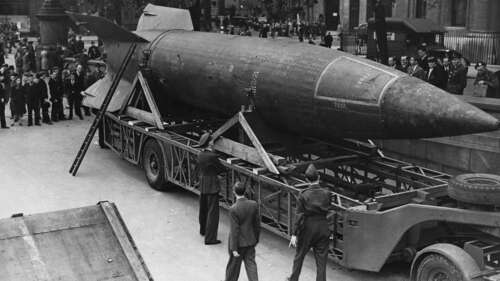
Around 1,600 scientists and their families came to the U.S. via Operation Paperclip. The program intended to further the development of rocket technology without letting the Soviets gain access, and it was largely successful. Von Braun and many others came to the States and became citizens while working to establish the basics of the American rocketry program. This significantly boosted American technological advancements in the field beyond what was possible at the time.
Operation Paperclip was and remains controversial, as it took people who actively supported the Nazis and German military with the bombardment of civilian cities. On top of that, facilities that manufactured V-2 rockets used a large force of slave laborers. Around 60,000 prisoners of war, Jews, Romani, and enslaved Germans toiled in the construction of the V-2. Despite this, the scientists involved and in charge of those facilities were welcomed to the U.S. to facilitate the demands of the Space Race.
The V-2 was a weapon of war, but at its core, the V-2 was a breakthrough in technology. Von Braun became the director of NASA’s Marshall Space Flight Center and was at the center of the development of one rocket in particular: the Saturn V. The Saturn V was built from the ground up for one purpose: to send astronauts to the Moon. Development began in the 1960s, and by 1967, the first Saturn V took flight. Two years later, the rocket carried Neil Armstrong, Buzz Aldrin, and Michael Collins to the Moon, and it wouldn’t have been possible were it not for the V-2.

